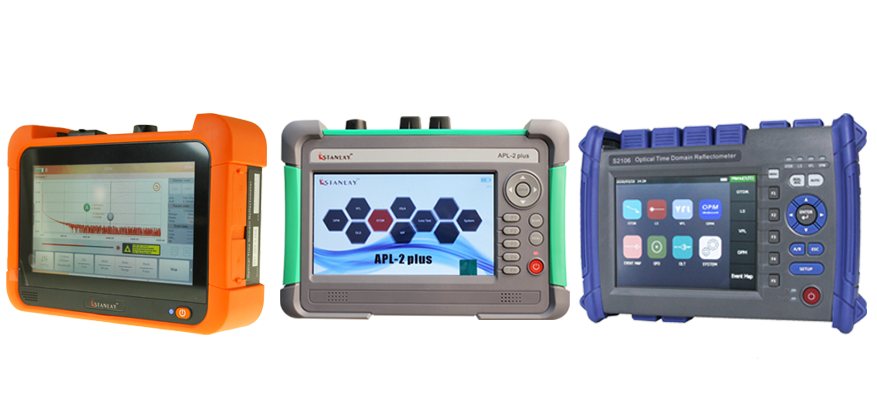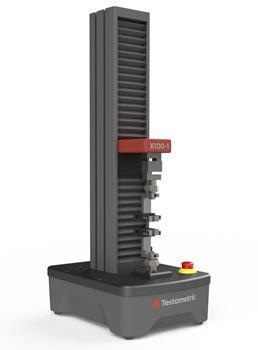Exploring Advanced Techniques in Fiber Measurement and Their Market Impact
In today's textile industry, exact fiber measurement is vital for enhancing manufacturing processes and meeting sustainability goals. With the surge of innovative imaging and analytical tools, you can acquire much deeper understandings right into fiber structure and make-up. This change not only boosts performance yet also lines up with industry criteria. As these sophisticated strategies advance, you could question exactly how they can additionally change manufacturing practices and effect the future of fabrics.
The Value of Accurate Fiber Measurement in Textile Production

Cutting-edge Imaging Technologies for Fiber Analysis
When it concerns fiber analysis, cutting-edge imaging innovations are game changers. High-resolution microscopy techniques and spectroscopic analysis techniques provide you with comprehensive understandings right into fiber structure and composition. These innovations not just boost precision but additionally simplify your dimension processes.
High-Resolution Microscopy Techniques
High-resolution microscopy strategies have reinvented fiber evaluation, enabling scientists to envision fibers at unprecedented levels of information. With techniques like scanning electron microscopy (SEM) and transmission electron microscopy (TEM), you can observe fiber morphology, surface attributes, and cross-sections with exceptional clarity. These techniques allow you to compare different fiber types and assess their architectural integrity. You'll discover that high-resolution imaging assists recognize flaws, inclusions, and other important characteristics that can affect product efficiency. Improvements in digital imaging software application have actually enhanced picture processing, making it less complicated to examine and analyze information. By adopting these cutting-edge strategies, you can drive better accuracy in fiber dimension and contribute to developments in various markets, from textiles to compounds.
Spectroscopic Evaluation Approaches
Spectroscopic analysis approaches have become effective tools for fiber characterization, supplying insights that enhance high-resolution microscopy. You can make use of techniques like infrared (IR) spectroscopy, which aids determine the chemical composition of fibers by measuring molecular resonances. Raman spectroscopy provides another layer of information, permitting you to analyze molecular frameworks with spreading of monochromatic light. These approaches not only improve your understanding of fiber residential properties yet also enable the discovery of impurities and architectural variants. By integrating spectroscopic strategies with standard microscopy, you gain a more considerable sight of fibers' physical and chemical qualities, boosting your research accuracy. Eventually, these innovations can notably affect product option and quality assurance in different industries.
Advanced Analytical Equipment and Their Applications
As you discover the domain name of fiber dimension, you'll discover that sophisticated logical devices play a crucial duty in enhancing precision and efficiency. Methods like high-performance fluid chromatography (HPLC) and gas chromatography (GC) allow you to assess fiber make-up with remarkable precision. These devices enable you to recognize specific components and impurities, making certain quality assurance in your products.Additionally, making use of scanning electron microscopy (SEM) offers you a detailed view of fiber structure, assisting you understand exactly how different therapies influence performance. Modern software likewise enhances data analysis, making it simpler to analyze complex outcomes and collaborate throughout teams.

Effect of Fiber Measurement on Production Effectiveness
While accurate fiber dimension may look like a tiny detail, it significantly impacts manufacturing performance in the textile market. When you spend in exact fiber dimension strategies, you can maximize raw product use and decrease waste. This brings about better resource appropriation, enabling you to create top quality textiles without overusing resources.By understanding fiber characteristics, you can customize production processes to particular materials, improving your process and minimizing downtime. Knowing the precise tensile strength of fibers allows you readjust machinery settings for optimum efficiency. This not only speeds up manufacturing however also assures constant product quality.Moreover, exact fiber measurement aids you determine problems early in the assembly line, preventing pricey reworks and delays (optical fibre diameter analyzer). Overall, executing advanced fiber measurement techniques enhances operations, improves effectiveness, and eventually enhances success. In today's affordable market, every information counts, and specific fiber dimension is a game-changer
Sustainability Considerations in Fiber Assessment Techniques
When you assess fiber, it's crucial to consider sustainable methods that can minimize ecological influence. Utilizing eco-friendly measurement techniques and lowering waste in your assessments can substantially improve your total sustainability. Furthermore, incorporating lifecycle analysis into your techniques can offer a more clear image of your fiber's ecological footprint.
Eco-Friendly Measurement Techniques
Thinking about the growing need for sustainability in various industries, embracing environment-friendly measurement approaches for fiber evaluation has actually come to be vital. You can start by using safe solvents and biodegradable products in your testing procedures. These choices not only reduce ecological influence however additionally enhance security content for your group. Implementing electronic dimension strategies can further reduce waste, as they usually require fewer physical examples and sources. Furthermore, leveraging innovative modern technologies like near-infrared spectroscopy can yield precise results without harmful chemicals. By picking these greener techniques, you add to an extra sustainable future while keeping high standards in fiber quality. Inevitably, integrating eco-friendly methods into your fiber evaluation not only lines up with customer worths however likewise improves your brand name's reputation.
Reducing Waste in Analysis
To effectively reduce waste in fiber assessment, you can carry out approaches that enhance your testing procedures and lessen source intake. Beginning by enhancing sample sizes; utilizing smaller sized examples can generate precise outcomes while conserving products. Next off, buy multifunctional devices that permits different examinations without requiring numerous devices, reducing energy and resource usage. You ought to also think about adopting digital devices for information collection and analysis, which can reduce down on paper waste and boost performance. Routinely educating your group on lasting practices assures everybody's aboard with waste decrease goals. Finally, collaborating with suppliers that focus on sustainability can further boost your efforts, permitting you to evaluate fibers while preserving a commitment to ecological obligation.
Lifecycle Analysis Combination
Integrating lifecycle analysis (LCA) right into fiber assessment strategies can greatly boost sustainability efforts. By analyzing the ecological effects of fibers from production to disposal, you can recognize areas for enhancement. their website This approach helps you understand resource usage, power use, and waste generation throughout the fiber's life.When you incorporate LCA, you're not just gauging fiber characteristics; you're likewise thinking about the eco-friendly footprint. This alternative view enables you to make informed decisions that prioritize sustainability. You may select fibers that call for less resources or have a reduced carbon influence. Inevitably, LCA equips you to optimize processes, lower waste, and promote ecologically friendly selections in fiber manufacturing, straightening your experiment worldwide sustainability objectives.
Industry Standards and Rules Shaping Fiber Measurement
As the demand for top quality fiber products grows, understanding the market criteria and laws that control fiber measurement comes to be essential. These guidelines guarantee consistency, accuracy, and safety in the measurement procedure, which eventually impacts product quality. Organizations like ASTM International and ISO stated standards that suppliers should abide by, covering various aspects such as fiber identification, strength screening, and moisture web content evaluation.

Future Fads in Fiber Measurement and Textile Production
How will developments in modern technology reshape fiber measurement and textile production? You'll see a shift towards automation and real-time information analysis, enhancing accuracy and effectiveness. Smart sensing units will monitor fiber residential or commercial properties continually, permitting immediate modifications in manufacturing. This implies you can anticipate higher quality materials with less waste.Moreover, AI and artificial intelligence will predict patterns in consumer choices, allowing producers to adapt promptly. optical measurement system. By incorporating blockchain modern technology, you'll have better traceability of materials, making certain sustainability and moral sourcing.Virtual truth and increased fact will play a role as well, supplying immersive training experiences for workers on fiber handling and production processes.As you welcome these modifications, the fabric market will fiber measurement certainly change right into an extra responsive, sustainable, and cutting-edge market, setting brand-new criteria for quality and performance. The future of fiber measurement and fabric production is bright, and it's time to jump on board
Frequently Asked Concerns
What Are one of the most Common Fiber Kind Measured in the Market?
In the sector, you'll commonly run into all-natural fibers like cotton and woollen, as well as synthetic alternatives such as polyester and nylon. Each kind has one-of-a-kind properties, influencing their dimension and application in different products.
How Do Fiber Dimensions Influence Consumer Item High Quality?
Fiber measurements directly influence consumer product quality by ensuring consistency, durability, and efficiency. When you understand these metrics, you can make informed selections, bring about improved contentment and much better total experiences with the items you use.
What Training Is Required for Fiber Dimension Technicians?
To become a fiber dimension service technician, you'll require specific training in fabric scientific research, dimension methods, and tools operation. Hands-on experience and certifications can improve your abilities, making you skilled in exact fiber evaluation and quality guarantee.
Are There Any Kind Of Qualifications for Fiber Dimension Professionals?
Yes, there are certifications for fiber dimension experts. You can seek alternatives like the Qualified Optical Fiber Specialist (CFOT) or different industry-specific qualifications that boost your competence and trustworthiness in fiber dimension and screening.
How Can Small Companies Apply Fiber Measurement Techniques Effectively?
You can apply fiber measurement methods effectively by investing in affordable tools, training your team, and developing clear protocols. Collaborate with market experts and constantly fine-tune your processes to improve accuracy and efficiency over time.